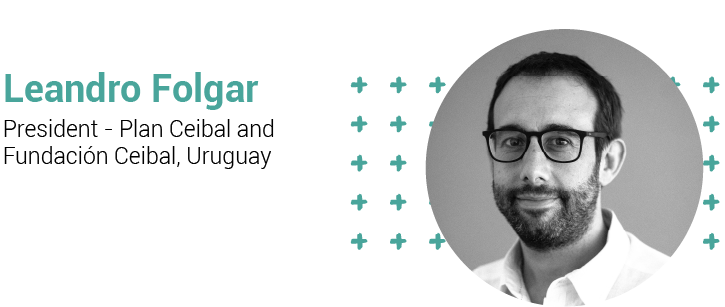
The Uruguayan education system faced a major challenge as a consequence of a timely and speedy reaction to contain the potential health crisis that COVID-19 could cause in a health system that was not expecting a historic pandemic. As soon as the first cases of coronavirus were confirmed in Uruguay, in-person classes were cancelled and the population was urged to quarantine voluntarily.
This in turn generated a major challenge for the Plan Ceibal, which was addressed in coordination with the National Public Education Administration (Administración Nacional de Educación Pública, ANEP). The challenge was how to offer a service in the education system that would allow teachers and students to stay in contact immediately and on a national scale. By redoubling capacity for connectivity and the service of platforms accessible via the single Ceibal login, [1] it was possible to offer an optimum channel to maintain contact and, thus, learning. This meant teachers had to make major adaptations to how they worked, students had to adapt their habits and families adjust the kind of support they had to provide.
This was how the Ceibal en Casa (Ceibal at Home) programme emerged, executed by the ANEP and Plan Ceibal, seeking to offer the greatest possible amount of support to sustain teacher-student ties and learning during the toughest time of isolation, while we prepared for a potential gradual return to some in-person classes, something which seemed very uncertain at first. The initial plan worked well in comparison with the region, but it was still necessary to generate additional systems to reach those students who remained disconnected to some degree. It was necessary to increase our server capacity and permanently monitor our platforms’ performance. This allowed us to generate data for real-time decision-making, which alerted us to a certain degree of disconnection in some students. This led to the emergence of transmedia television formats, produced in collaboration with the ANEP and Uruguayan National Television, to further extend our reach and update programmes for teachers, which became mass programmes.
Of great importance was the availability of computers from the Plan Ceibal to access both the platforms and the videoconferences that were added to the CREA platform, as well as the development of software that would make it possible to get those devices to students even with education centres closed.
Once the first response stage had been overcome, we were able to move on to the combined Ceibal model, attending to a combined in-person and online system that was coming into being in Uruguay as a result of the gradual opening of education centres. This model brought a greater need for content and additional services from our teachers who came up with combinations of technology and in-person classes that did not previously exist.
Today Ceibal has grown a great deal thanks to the decentralized innovation of our teachers, students and families throughout the country. We have new challenges in terms of accompaniment, evaluation, support and continuous improvement as a result of that innovation. Although the crisis is not entirely over, we have a new experience of collaboration with our education system that gives us a clear horizon to continue towards.
- The single login makes the experience easier for users in the education system: with just one registration they have access to all Plan Ceibal services, facilitating the remote use of teaching and learning resources. It also makes it possible to gather usage information, which is vital for generating improvements.
